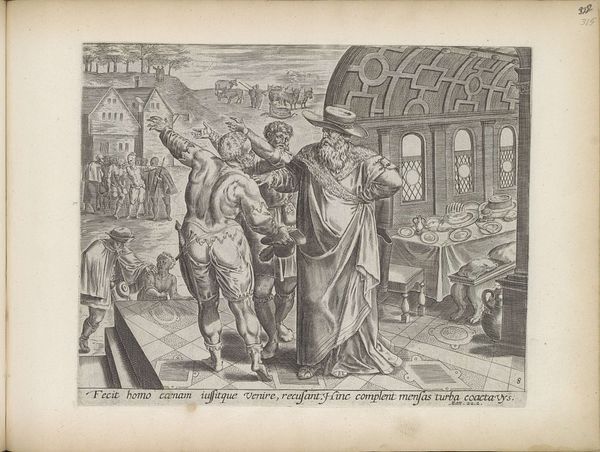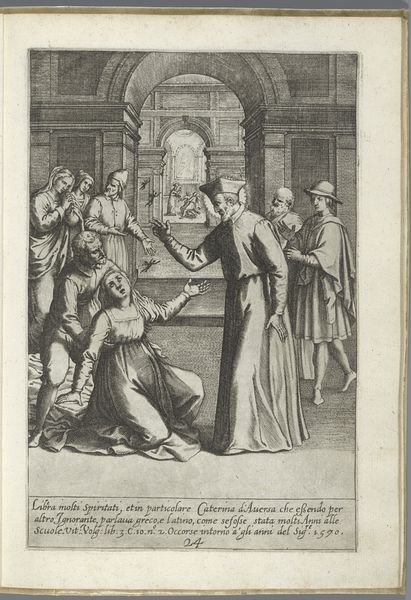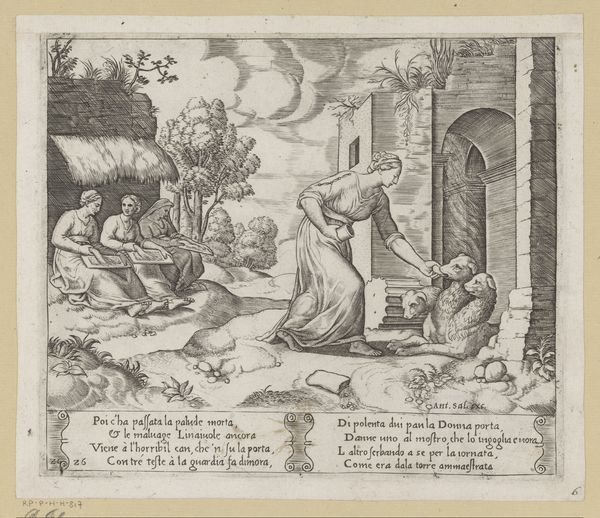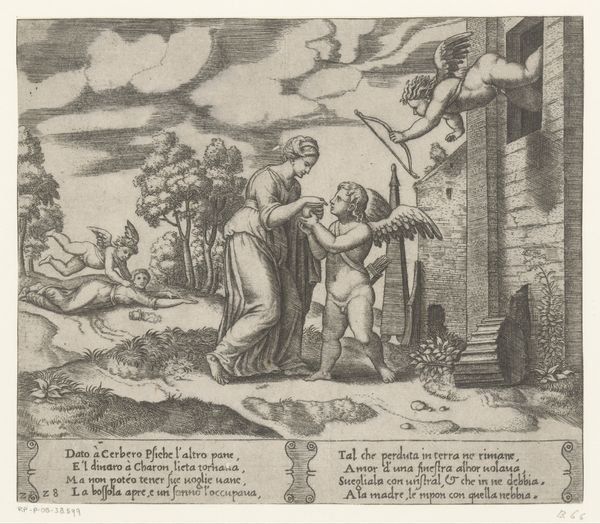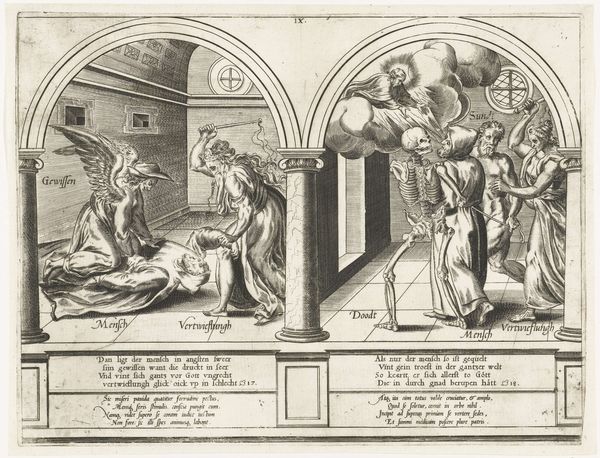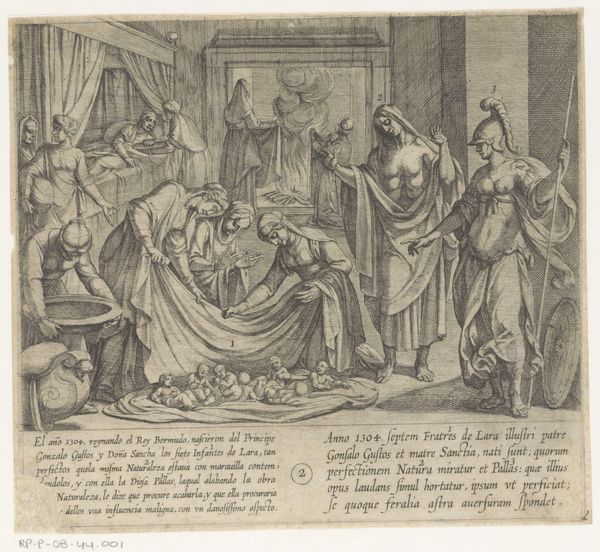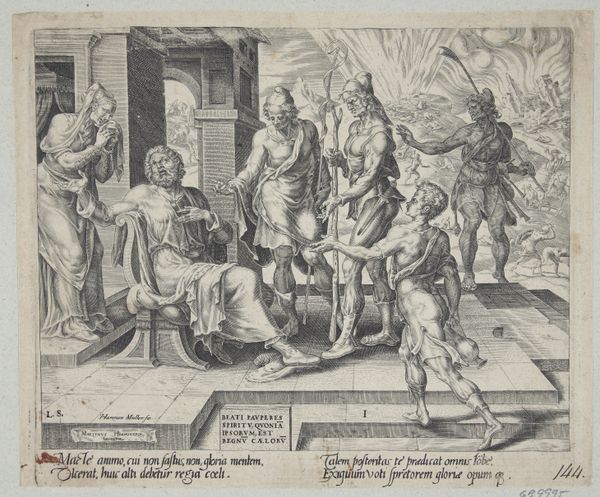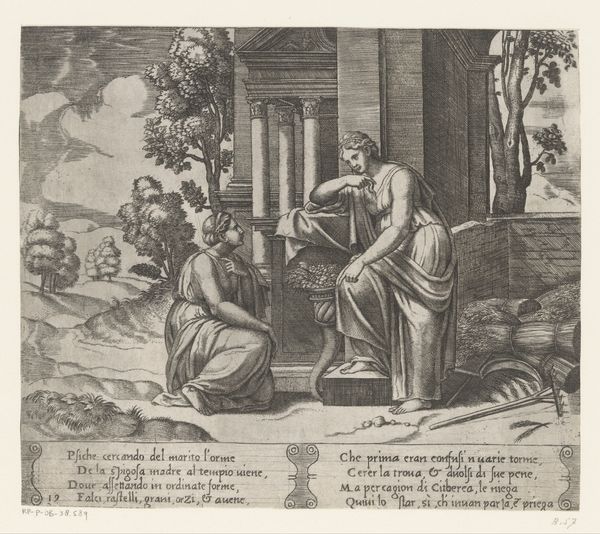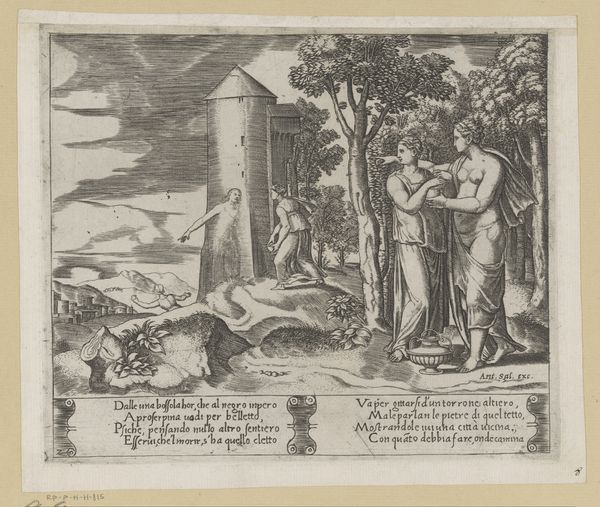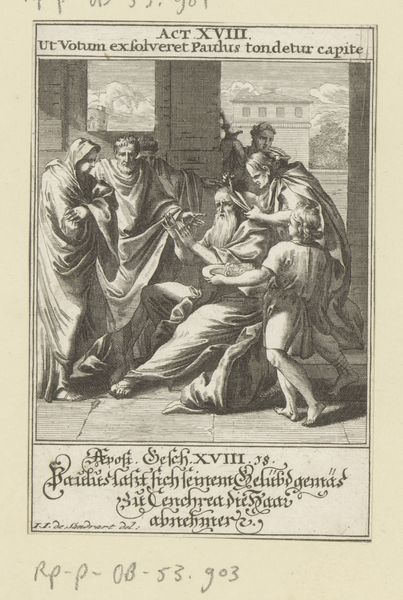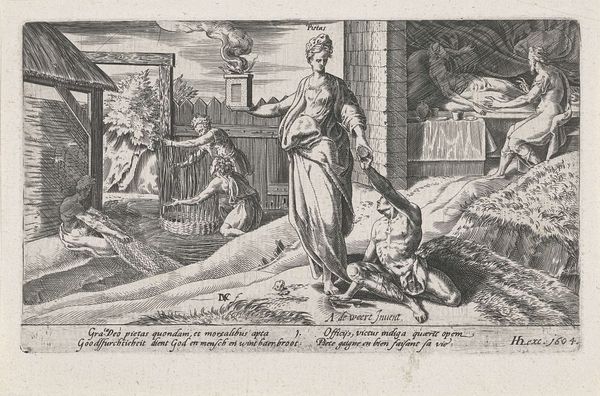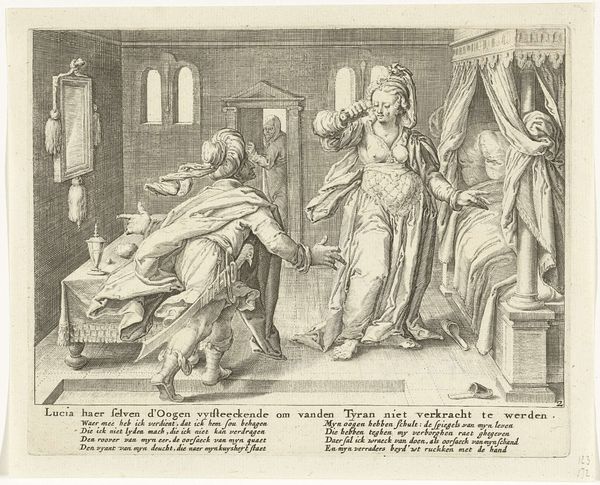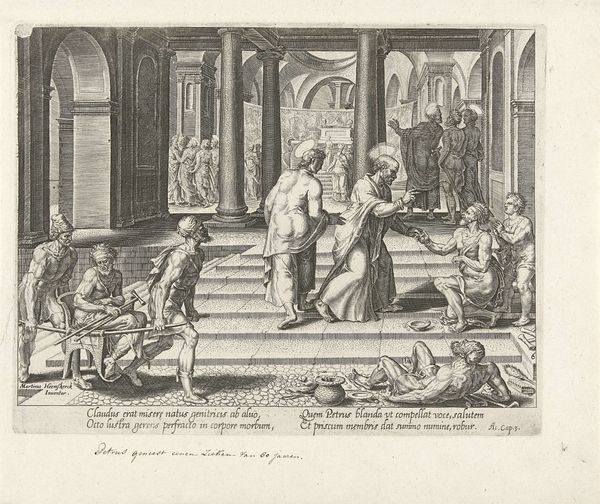
print, engraving
# print
#
mannerism
#
figuration
#
history-painting
#
engraving
Dimensions: height 199 mm, width 232 mm
Copyright: Rijks Museum: Open Domain
Curator: At first glance, the composition strikes me as somewhat static despite the narrative moment. There's a deliberate arrangement of figures and architectural elements, a clear attempt to impose order. Editor: Indeed. This is "Venus instructs Psyche to Sort Grain," an engraving, circa 1530 to 1560, by the artist known as Meester van de Dobbelsteen, currently held in the Rijksmuseum. It depicts a scene from the tale of Cupid and Psyche. Curator: Focusing on the figures, notice how each is rendered with pronounced musculature, even the female figures, which leans toward a Mannerist ideal, but I am captivated by the line work. The engraver’s use of hatching and cross-hatching creates a fascinating tension. The modeling on Venus feels... different. Editor: And why do you suppose? Beyond just the skill of the artist, it reflects the evolving cultural perception of women, specifically idealized female forms. Venus was very much about representing ideals of beauty and, perhaps, even political power through the depiction of the body. Also it depicts an interesting moment within the overall narrative - a test that seems designed to break Psyche’s spirit and to showcase the seemingly insurmountable tasks mortals faced from gods. Curator: Observe also how the artist guides your eye through space. The columns and arches frame each group. But they are flat, static—the narrative gets short shrift to surface qualities. Editor: One reading would place the emphasis on that relationship between divine cruelty and human ingenuity and also to explore ideas about societal expectations surrounding beauty, power, and women. The depiction here could subtly critique such imbalances. Curator: Right. Ultimately, while this piece reveals an intriguing construction through light and shadow, what dominates for me is that surface tension – how it balances design with content. Editor: This piece functions as more than just an illustration—it gives form to ongoing struggles. As such, a study in technique alongside narrative storytelling.
Comments
No comments
Be the first to comment and join the conversation on the ultimate creative platform.

